
Lepidoptera, both butterflies and moths, are among the best known organism groups in the world. Therefore they are used as favourite models for various ecological research, as well as for efficient evidence-based conservation. Unfortunately, general knowledge of butterflies and especially moths from the Afrotropics is highly limited. Very often even the local biodiversity is not fully known, which then pretty limits our understanding of local communities and ecosystems. Similarly, many ecological phenomena well known from other parts of the world have never been studied in tropical Africa. Since 2007, we are trying to fill these knowledge gaps through an extensive study of Afrotropical Lepidoptera in various parts of the continent.
Patterns of diversity along ecological gradients
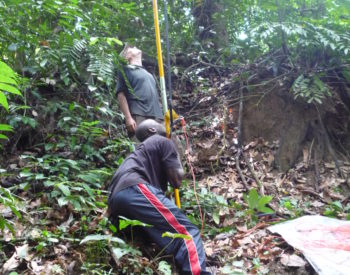
Various global and local patterns of biodiversity have resulted from complex combinations of numerous historical, evolutionary and ecological factors. Knowledge on distribution of biodiversity along environmental gradients (i.e. changes of environmental conditions) is crucial for our understanding of its global patterns and history. Such knowledge is especially crucial in tropics where the majority of species occur. Nevertheless, because of various reasons there is a general lack of such data, especially from the Afrotropics. In this context, we are currently studying changes of Lepidopteran diversity along two ecological gradients in tropical Africa: an altitudinal gradient of Mt. Cameroon and a productivity gradient in southern Africa.
Mt. Cameroon is, with its 4,095 m a.s.l., the highest mountain in West/Central Africa. It offers the only complete altitudinal gradient of tropical forest reaching from seashore to timberline (~2,200 m a.s.l.) in the whole continent. Since 2014, we have been intensively focusing on local communities of both butterflies and moths along the gradient. By exposing probably the highest numbers of baited traps ever, we are standardisely sampling fruit-feeding butterflies and moths in both canopy and understory. Moreover, we are catching moths attracted to light. Our close collaboration with several international specialists allows us to focus on a large number of target groups (i.e. Rhopalocera, Geometroidea, Lasiocampoidea, Cossoidea, Bombycoidea, and a substantial part of the Noctuoidea). For both projects, the sampling is repeated to unravel any potential seasonal patterns. As we are sampling at the plots established by our colleagues (especially Dr. David Hořák and Dr. Ondřej Sedláček), our research adds a diverse group of insects to several ongoing projects on birds and plants.
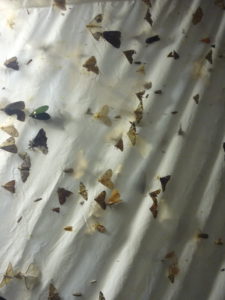
Recently (since November 2016), we have started to sample moths by a standardised light traps along a productivity gradient from the Namib dessert in Namibia to Zambezi river in Zimbabwe. The relationship between productivity and biodiversity has been of long-standing interest to ecologists, but there are almost no quantitative data from gradients not related with latitude, especially on insects. Again, we are closely collaborating with ornithologists (the project is led by Prof. David Storch), so we our data will be directly comparable with birds.
Ecology and conservation of Afrotropical Lepidoptera
Butterflies and moths are popular and highly suitable model group for our understanding of ecology as well as sustainable conservation of tropical forests. Unfortunately, our knowledge on Afrotropical Lepidoptera is highly limited. We focus on various aspects of ecology of both butterflies and moths, especially in relation to their endangerment and conservation.
Our research of lepidopteran habitats started in Cameroonian Bamenda Highlands, one of the most threatened regions globally, in 2007. We have shown that some of the endemic montane butterflies are specialised for open habitats, including grasslands. We thus evidenced that the generally overlooked open habitats are important for the local biodiversity and its conservation, especially in a mosaic with the vanishing Afromontane forests. Recently, we have included also moths into our research within the same area. We focus on responses of their communities for the forest fragmentation by systematic sampling in various forest remnants. Considering conservation of Afromontane biodiversity, we have also data on the known distribution of montane butterflies across the whole Gulf of Guinea mountain range originated during our intensive sampling supported by the National Geographic Society, as well as from many collections of our colleagues and from museums. After finishing the ongoing analyses, it will help us to evaluate conservation values of individual areas and to set the most urgent targets for the regional conservation.
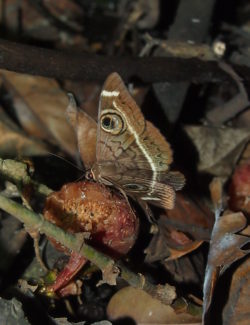
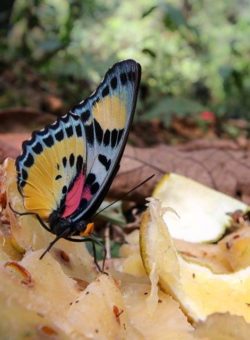
In contrast to our Afromontane biodiversity research, Mt. Cameroon offers a large area of tropical forest with minimal human influence. Simultaneously, it allows us to broaden our interest to lower elevations covering habitats from sea level to the timberline. Our intensive bait trapping provides a relatively detailed view into how forest structure influences occurrence and abundance of various fruit-feeding butterfly and moth species. Such data, still very rare from Afrotropics, will help us understand habitat use from various species. Altogether, these results will reveal the influence of forest structure to whole lepidopteran communities. Simultaneously, Mt. Cameroon offers a unique chance to study dynamics of biodiversity under natural disturbances of tropical forests. Locally, the forest includes open-canopy gaps highly-disturbed by a small population of forest elephants. These are supplemented by undisturbed forest behind lava flows not crossed by elephants. Currently, we are starting a project directly comparing moth communities of the two habitats under the different disturbance regime. Such knowledge will be useful for various usages in habitat conservation and restoration.
To better understand a role of butterflies and moths in ecosystems, we extensively focus on pollination by both groups. More information on our pollination research, including butterflies and moths as the model groups, can be found here.
Diversity of Afrotropical Lepidoptera
The material collected during our research covers a wide range of lepidopteran taxa. Many of these were never inventoried at such a large scale and thus hold valuable taxonomic information. Various collaborators have included samples from our collections into their research, majority of which are still ongoing. Moreover, we have a rich genetic data on phylogeny and population genetics of numerous Afromontane specialists (students wanted!).
Our research has enriched the current knowledge on many species’ distribution, we have also discovered several new species. So far, a few species has been described from our material: two new butterflies from Cameroon, one new butterfly subspecies from Liberia, a new carpenter moth genus discovered on Mt. Cameroon, and several more yet to be published. The majority of our collected material is stored in two museums: the Zoological Museum of the Jagiellonian University in Krakow and the Bavarian State Collection of Zoology, Munich.
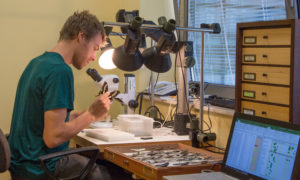
On the research of Afrotropical Lepidoptera, we closely collaborate with many international specialist, mainly Szabolcs Sáfián, Tomasz Pyrcz and Axel Hausmann. Our projects are currently supported by the Czech Science Foundation and the Grant Agency of the University of South Bohemia.
